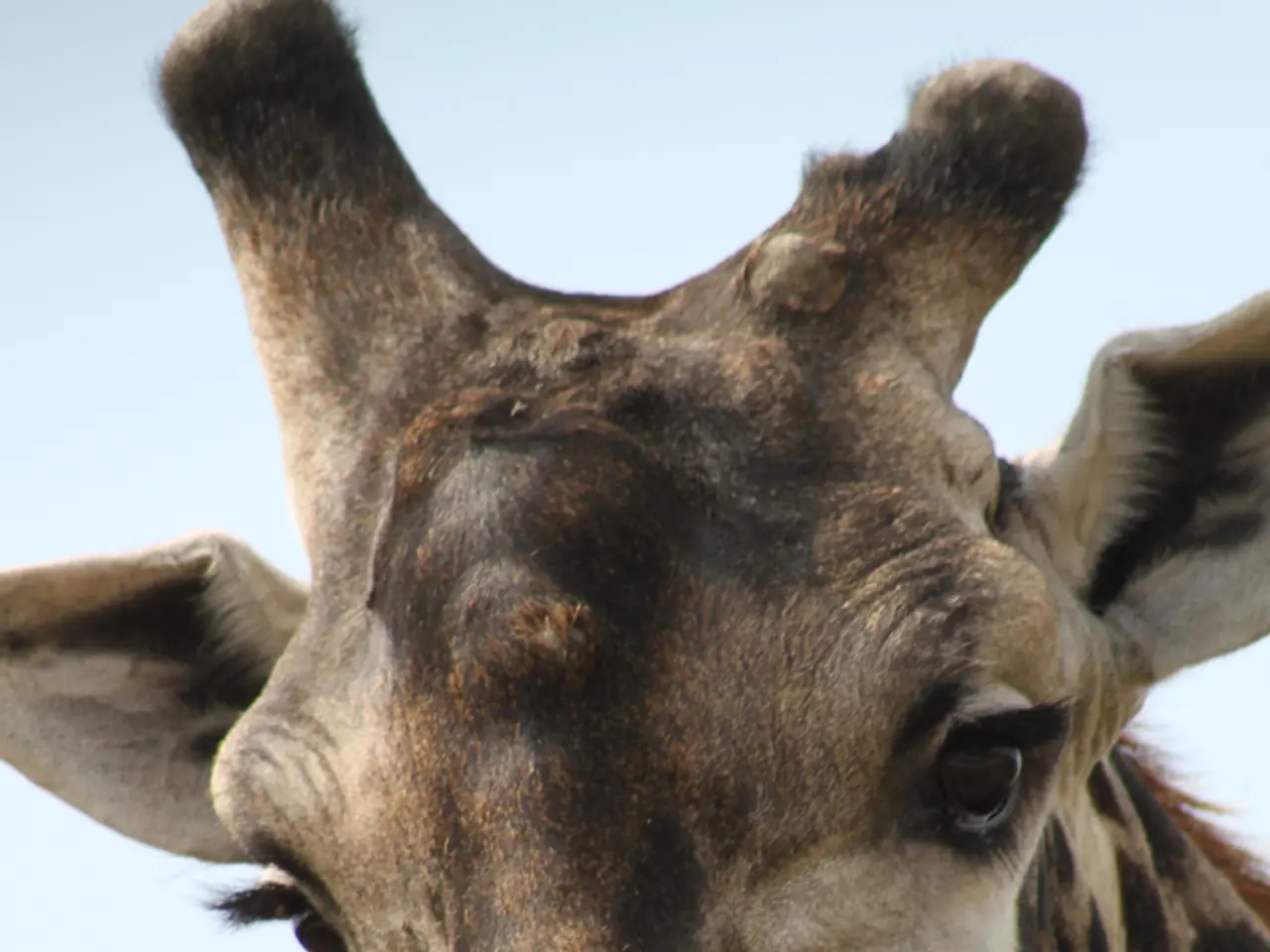Cause behind the patterned coats of giraffes
In the vast expanses of the African savannah, the towering silhouette of a giraffe is a sight to behold. But it's not just their impressive height that sets them apart; their unique coat patterns play a crucial role in their survival.
Giraffe spots serve more purposes than mere camouflage, acting as important tools for body temperature regulation and social recognition.
Camouflage is particularly vital for young giraffes, helping them blend into the dappled light and shadows of acacia trees and savanna vegetation. This disruptive coloration, with its irregular brown patches separated by lighter cream or white lines, is optimized regionally for different habitat types and is most effective during dawn and dusk when predators are most active.
The dark patches on a giraffe's coat are not just visually striking, but they also contain specialized blood vessels beneath the skin. This sophisticated thermoregulatory system helps giraffes maintain their body temperature more efficiently in the hot African environment. When a giraffe needs to lose heat, blood vessels under a patch dilate, sending blood to the patch and releasing heat.
Giraffe spots also play a significant role in social interactions. Each giraffe has a unique spot pattern, much like human fingerprints, enabling individuals to recognize one another. This unique pattern also facilitates mother-calf bonding and helps reduce conflicts by providing visual cues for individual identification.
Interestingly, the shapes of a giraffe's spots often correspond to the branching patterns of acacia trees, suggesting a natural alignment that may aid in camouflage and kin recognition.
Recent studies have also shown that coat patterns in giraffes help them recognize their kin and form stronger social bonds with giraffes whose coat patterns resemble their own. This kin recognition is crucial for the survival of young giraffes, as it helps them stay protected within their social groups.
Furthermore, the effects observed in Masai giraffes in Tanzania are likely to apply to other giraffe populations. Smaller spots in giraffes are more beneficial in hotter conditions, as larger, darker patches tend to absorb more solar heat. Conversely, larger spots in Masai giraffes may offer an advantage in colder climates, as the blood vessels beneath them can constrict to conserve heat.
In summary, the intricate patterns on a giraffe's coat are multifunctional adaptations that enhance their survival by providing camouflage, helping regulate body heat through vascular mechanisms, and enabling social recognition within giraffe populations. These fascinating findings shed new light on the complexity of giraffe coat patterns and their role in the animals' survival strategies.
Science reveals that giraffe spots serve not only for camouflage but also for health-and-wellness purposes, aiding in body temperature regulation, and fostering social recognition and kin recognition in fitness-and-exercise scenarios.
Giraffe spots, optimized regionally for different habitat types, are essential for young giraffes to blend into their environment during dawn and dusk. These uniquely patterned coat insulations enhance survival through various means, including thermoregulation via specialized blood vessel networks and social recognition akin to human fingerprints, ultimately facilitating stronger bonds among kin.




